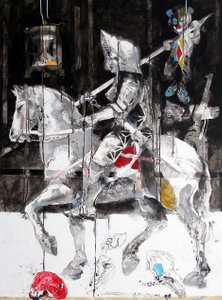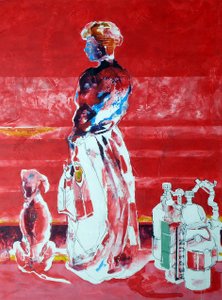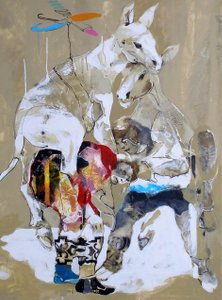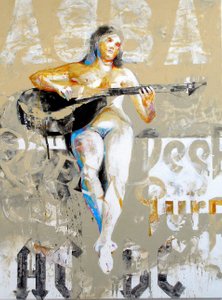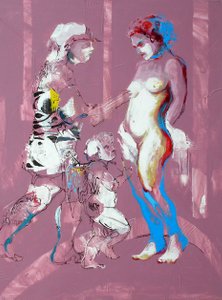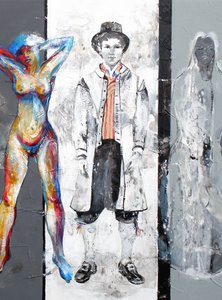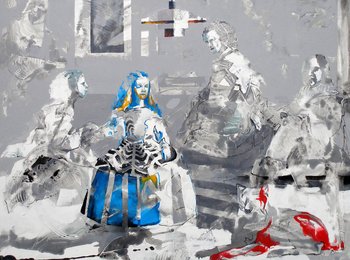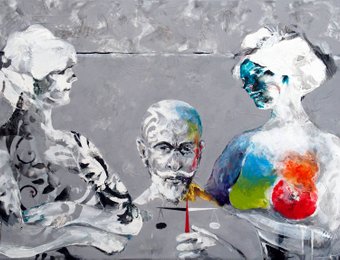Time to Meet the Masters
ARS LONGA, VITA BREVIS
We are living in a time, where modern art has a tendency to announce the death of the old, soul-building artistic traditions ... no more Renaissance ... no more Humanism!
- Is it really true that everything today is different? - Can we no longer learn anything from medieval art, the Renaissance, the Baroque etc.?
When we visit an art museum, why do we just pass by all the art created before a certain date, without immersing ourselves in it, or at least searching for new ways of looking at it? Just because art is of an older period, does not necessarily mean that it doesn't include deeper language, values, ideas or meening ...
Tyrpak finds inspiration for his paintings in, amongst other things, the works of the renowned masters such as Durer, Rubens, Caravaggio, Velázquez, Goya and Krøjer, saying:
"Today I feel that, once again, I am getting closer to the old masters' universe and way of thinking, but not in the same way as in my youth. During my time at the academy, I enthusiastically studied art from different art-historic drawers. Today I look at earlier works of art wearing some kind of "experience" glasses, which filter, analyse and eventually show things that I couldn't see before, giving me insight and inspiration towards a new interpretation for alternative artistic expression and language.
Paraphrases will show pictures, where I challenge and confront myself, aiming at finding similarities between the old and the new, the recognised and the experimental."
Face to face with the great masters, Tyrpak aims to challenge the artistic establishment, but interpret it and thereby make it alive, exciting and modern.
In his art you will find a newly developed form of life in the human bodies of the old paintings, expressed in lines, surfaces and dots, which really work in the field of tension between opposites.
These successful paraphrases lay in the perception that it is possible to recognise the original artwork in the new, discovering similarities and differences spanning time and place.
Tyrpak's style, emphasised by a powerful, expressive technique, where the motif is built in layers of brush strokes and chiselled areas, with over-painting and highlights, coloristic power and fading, contrast and harmony. The expression lies naturally far from the great masters valors, fabric imitation and details.
In a modern civilisation it can be difficult to be an artist with an art-historic view, but Tyrpak succeeds in making his art express other people's feelings, which is exactly where the old romantic themes meet modern reality.
He is searching in the great past - and there, we can all find inspiration to discover our own roots of contemporary art.
© By Martin Wolf
